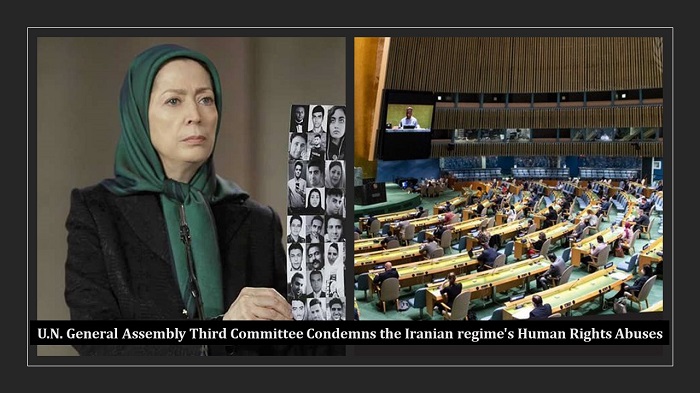
Regime condemned in 67th- The leader of the Iranian Resistance, (NCRI) and (PMOI / MEK Iran) emphasized that the Iranian regime has no respect for UN General Assembly resolutions.
United Nations Special Rapporteurs moved in December to hold the Iranian regime accountable for the 1988 Massacre of 30,000 People’s Mojahedin Organization of Iran (PMOI / MEK Iran) political prisoners after 32 years of inaction.
UN Special Rapporteurs on Human Rights
Seven top UN Special Rapporteurs on Human Rights sent a communique to the Iranian regime on September 3, 2020, expressing concern over the regime’s refusal to disclose the fate and location of the thousands of citizens who reportedly were forcibly disappeared and extra-judicially executed in the summer of 1988.
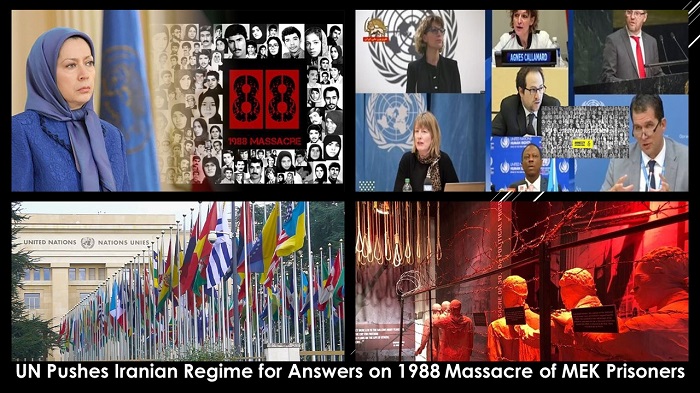
(NCRI) and (PMOI / MEK Iran): U.N. Urged to Investigate 1988 Massacre of Political Prisoners in Iran.
According to the communique, the human rights experts were “alarmed by allegations of the authorities’ refusal to provide families with accurate and complete death certificates, the destruction of mass graves, the ongoing threats and harassment of the families, the lack of investigation and prosecution for the killings and the statements from the Government denying or trivializing the cases and equating criticizing the killings as support for terrorism.”
The Special Rapporteurs were clear that the regime must answer for the 1988 Massacre “irrespective of the time passed” and that it may not escape culpability for its crimes by labeling the victims as security threats.
The UN experts wrote that “an enforced disappearance continues until the fate and whereabouts of the individual concerned are established irrespective of the time passed, and that the family members have a right to the truth which means the right to know about the progress and results of an investigation, the fate or the whereabouts of the disappeared persons, and the circumstances of the disappearances, and the identity of the perpetrators. We stress that this obligation is applicable to any individual who has been allegedly forcibly disappeared or unlawfully killed, regardless of whether they were civilians or defined as ‘terrorists’ or threats to national security under national law.”
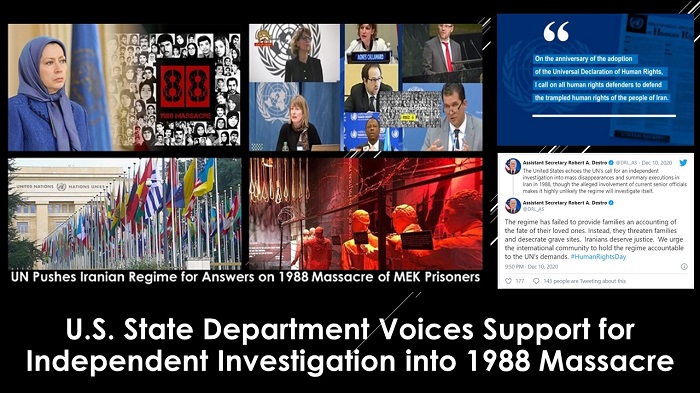
(NCRI) and (PMOI / MEK Iran): Historically Significant Letter About 1988 Massacre in Iran.
Crime against humanity
The UN experts described the 1988 Massacre as a “crime against humanity,” marking the first time the international body has acknowledged the mass executions in such terms. The Special Rapporteurs further issued a 60-day deadline for the Iranian regime to clarify the outcome of all cases brought to their attention. After the deadline, the communique and subsequent responses would be published online.
The Special Rapporteurs added that if the regime’s authorities “continue to refuse to uphold its obligations under international human rights law, we call on the international community to take action to investigate the cases including through the establishment of an international investigation.”
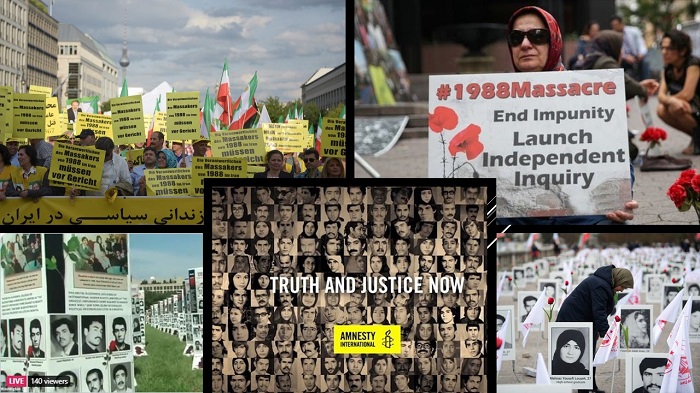
(NCRI) and (PMOI / MEK Iran): 1988 Massacre as a “crime against humanity,”
United Nations communique
On December 9, 2020, the United Nations made good on its threat. After the regime failed to take action within the 60-day window, the UN published the communique.
Diana Eltahawy, Amnesty International’s Deputy Director for the Middle East and North Africa, responded to the public release of the communique with optimism. “The UN experts’ communication is a momentous breakthrough.
It marks a turning point in the long-standing struggles of victims’ families and survivors, supported by Iranian human rights organizations and Amnesty International, to end these crimes and obtain truth, justice and reparation,” she said in a statement.
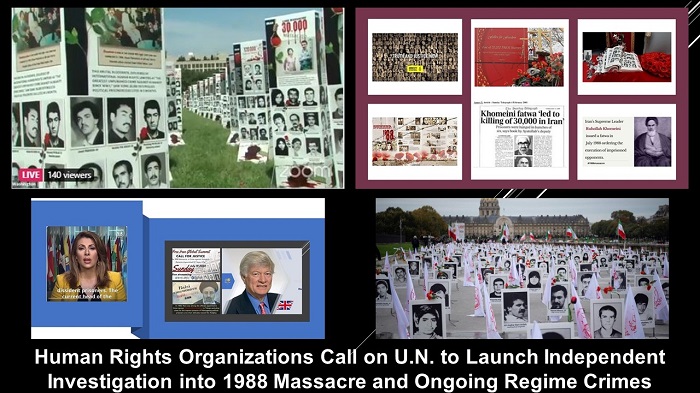
(NCRI) and (PMOI / MEK Iran): 1988 Massacre and Ongoing Regime Crimes.
Background on the 1988 Massacre
In the summer of 1988, regime founder Ruhollah Khomeini issued a fatwa calling for the deaths of all MEK political prisoners in Iran. Over the following months, 30,000 men, women, and teenagers were executed and buried in mass, unmarked graves. Most of the victims were imprisoned for peaceful activities, such as protesting, handing out pamphlets, or attending political gatherings. Many had already completed their sentences and were awaiting their release. Other MEK supporters were snatched off the streets and executed. All of the victims were executed for their political beliefs.
Family members were often not notified for months, if ever, of their loved ones’ deaths and were not given the location of their graves. Families have been silenced and denied the right to have public memorials. Those who have demanded justice have been intimidated.
Meanwhile, none of the perpetrators of the 1988 Massacre have ever faced justice for this crime against humanity. Many have gone on to hold high-ranking positions within the regime. Current Judiciary Chief Ebrahim Raisi personally sent thousands of MEK supporters to their deaths in Tehran.
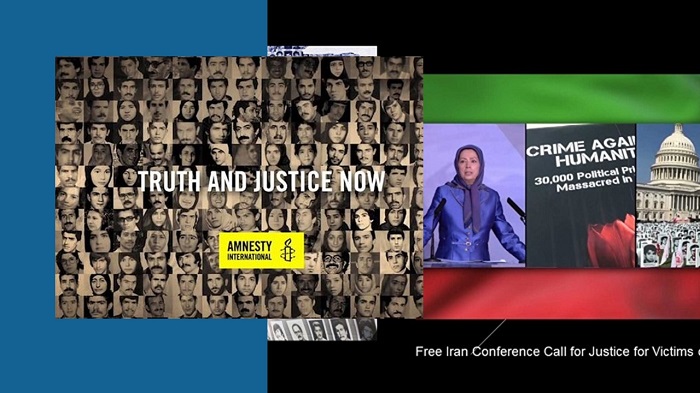
(NCRI) and (PMOI / MEK Iran): Families of Victims Still Seeking Justice for 1988 Massacre.
Next Steps
While the UN’s recent action represents much-needed progress, more needs to be done to hold the Iranian regime responsible for the deaths of 30,000 MEK supporters. As the representatives of the victims’ families, the Iranian people, and the Iranian Resistance, The National Council of Resistance of Iran (NCRI), the Call for Justice Movement asks that every country support the long-overdue referral of the 1988 Massacre dossier to the UN Security Council.
The Call for Justice Movement further asks the Human Rights Council to conduct an independent investigation into the 1988 Massacre. The list of the victims and their places of burial must be determined, and their killers must finally be brought to justice.
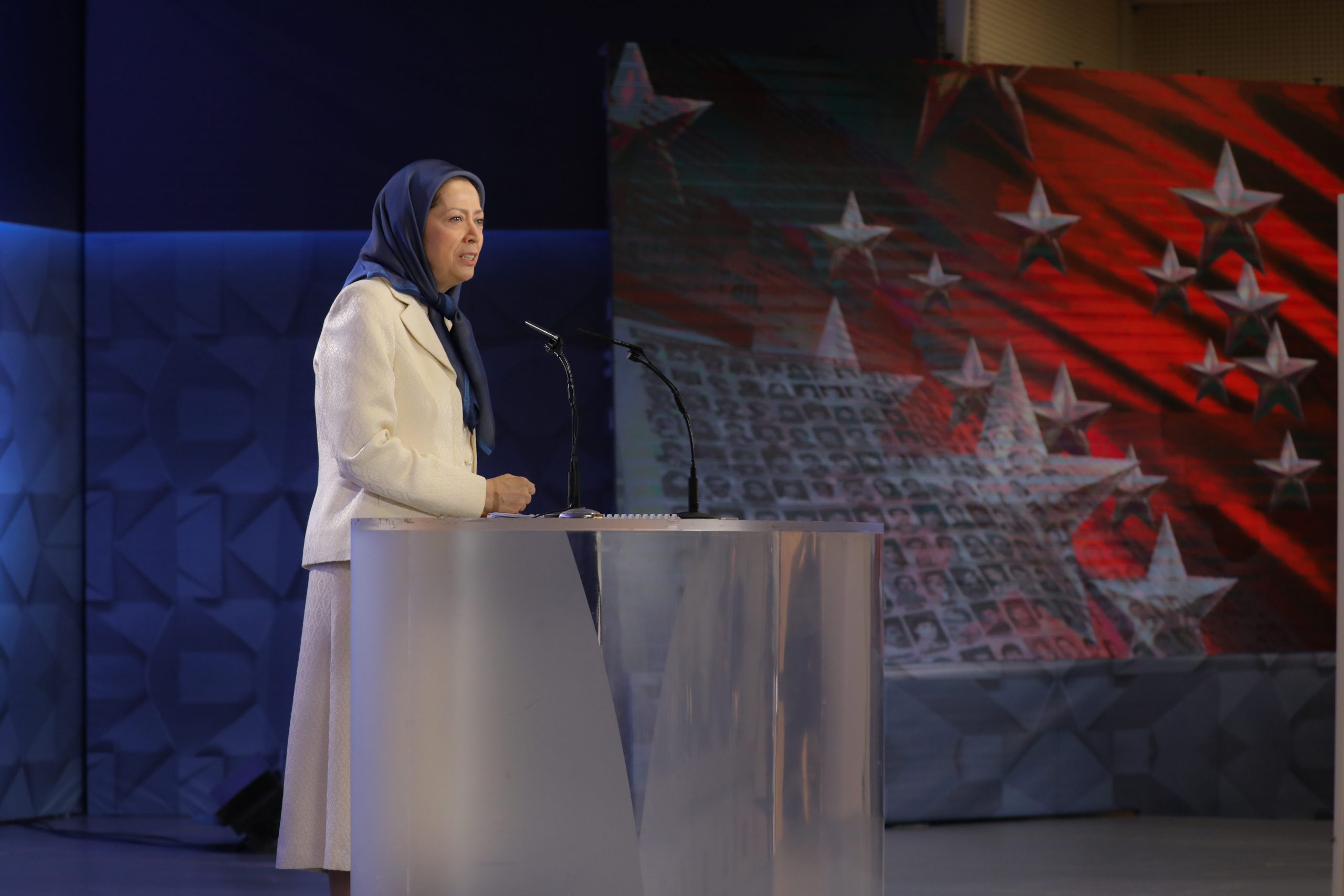
(NCRI) and (PMOI / MEK Iran): Maryam Rajavi at the conference of Calling for Justice for the 1988 Massacre – Ashraf3 (MEK’s site in Albania)- July 15, 2019.
and People’s Mojahedin Organization of Iran – MEK IRAN – YouTube
